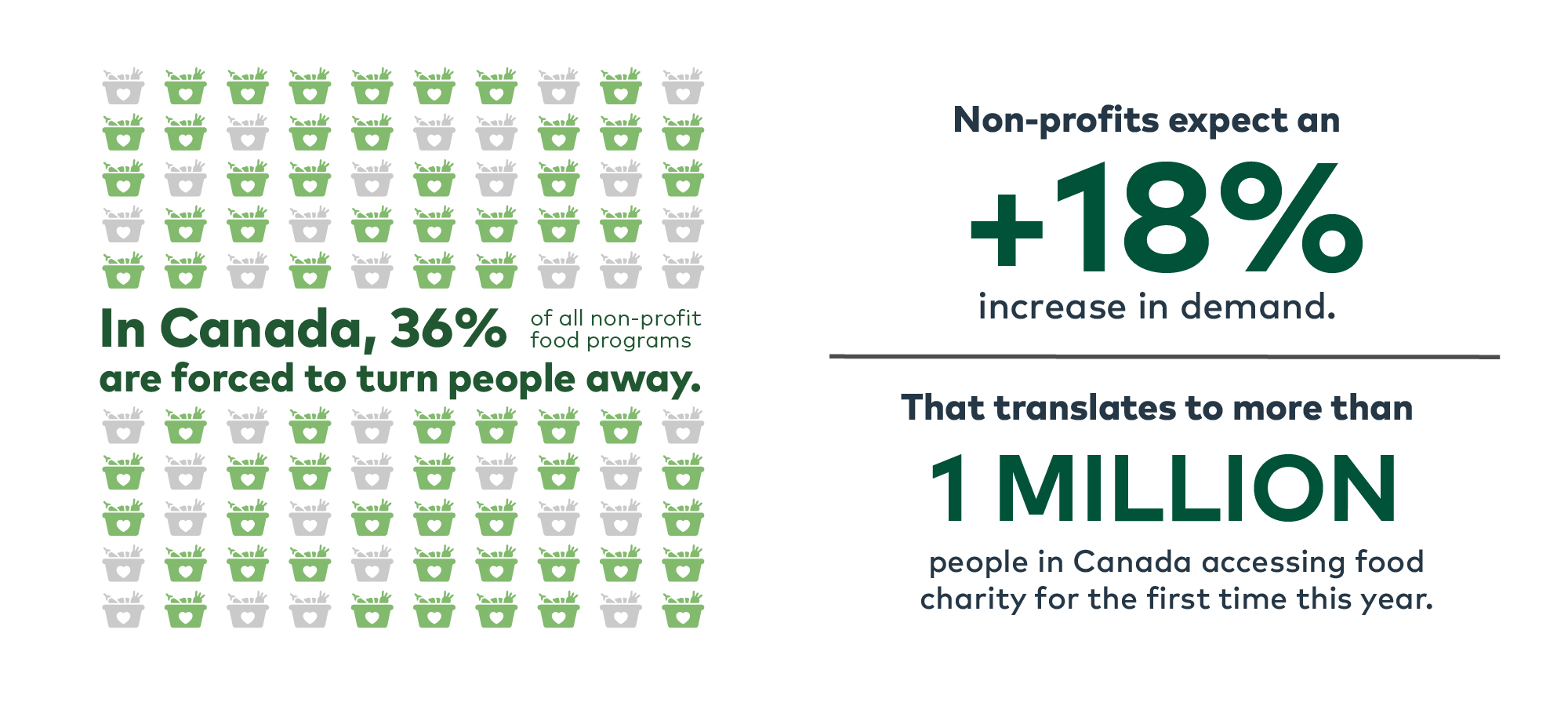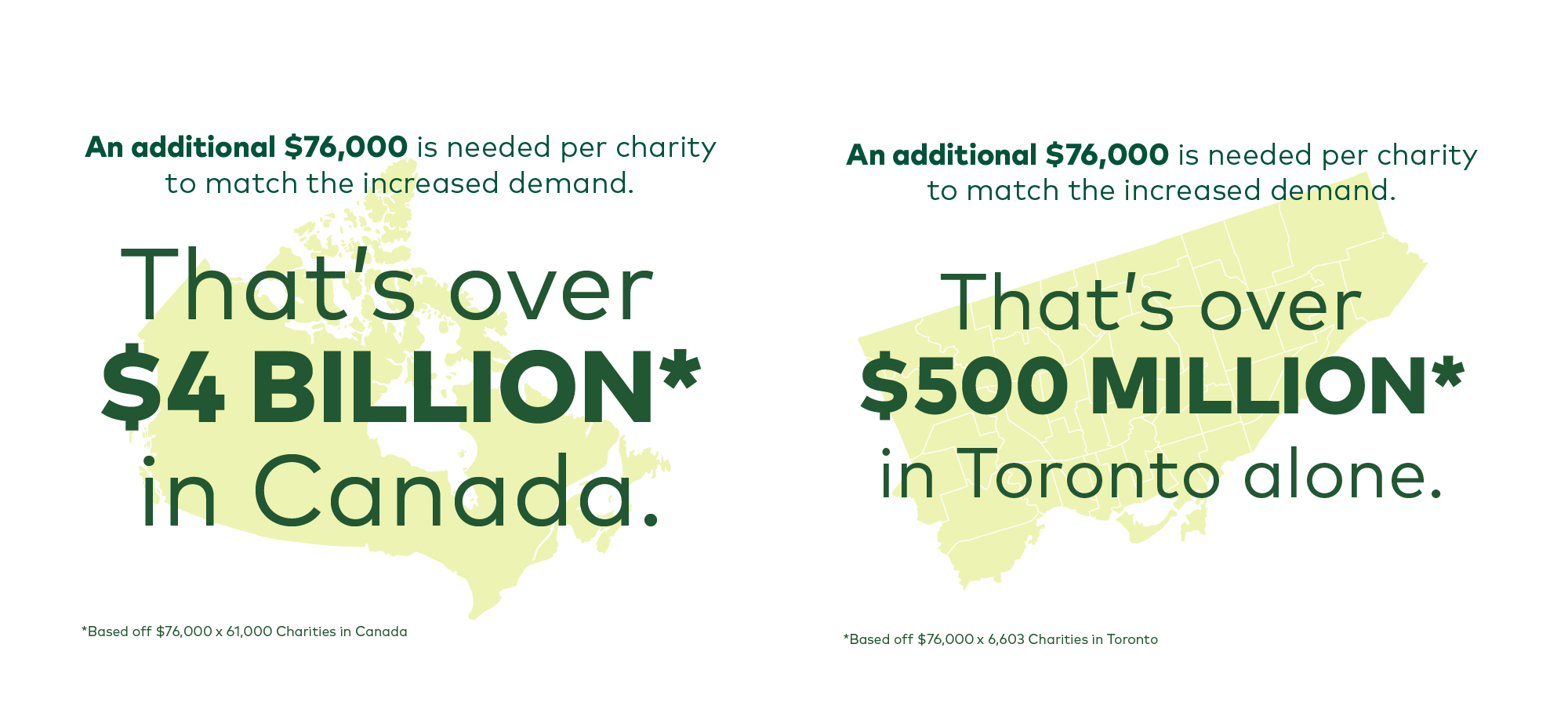More than one-third of food charities in Canada forced to turn people away while bracing for new demand in 2024
In December 2023, Second Harvest surveyed more than 1,400 non-profit organizations with charitable food programs across Canada and asked them to predict the demand for their services in 2024.
What we found is that these critical frontline organizations are expecting to see more than 1 million new people in need of food in 2024, and many are struggling to keep up with demand.
“People in Canada can’t keep up with rising food costs,” said Lori Nikkel, CEO of Second Harvest. “More people are being pushed towards food charity, which for most people comes as a last resort. Food charities already struggle to meet the current demand, with many of them being forced to turn people away and add their names to growing waitlists for support. Our systems are buckling under the pressure.”

The national survey measured how the charitable food sector, which includes food banks, faith-based organizations, schools, shelters and many other social service organizations anticipated how the need for their food charity programs are going to change this year. At the end of 2023, more than 1,400 Canadian non-profit organizations supporting people with food were surveyed. This is the second year Second Harvest has conducted this study.
Here’s an overview of some key findings:
- 36% of NFPs say they have a waitlist of people who cannot access their support. In Toronto, that number increases to 50%.
- NFPs expect an increase of 18% in additional demand in 2024. In Toronto, non-profit food programs are bracing themselves for an increase of 30%. That translates to more than 1 million people in Canada accessing food charity for the first time this year.
- 43% of NFPs say they'll need 50 percent or more perishable food next year to meet the demand.
- 52% of NFPs say they'll need 50 percent or more non-perishable food next year to meet the demand.
- The average need for funding per NFP increased by 13% from last year equating to $76,000 per NFP.


The charitable food sector is struggling
The good news is that there are levers and options available that would inject much needed food into the charitable sector, limit the negative effects of food waste and provide meaningful support for people, including:
Bringing back the Surplus Food Rescue Program
This federal program represents a triple-bottom line benefit. It delivers social good by feeding people, it has an environmental benefit by keeping perfectly edible food out landfills, and provides support and relief for Canadian food producers
Continuing the GST Grocery Rebate Program
The GST Grocery Rebate Program provides critical support for people in the midst of an affordability crisis. The federal government should consider expanding eligibility and keeping it in place until inflation cools to pre-pandemic levels
Municipalities can take action
Municipalities across the country can limit the negative impacts of food waste in their communities and inject much-needed food into the charitable sector by mandating surplus edible food redistribution from food businesses, distributors, street festivals and events. They could also consider public policy related to the measurement of food waste by business to support future planning and identify areas of potential improvement as well as sources of healthy donatable food.










